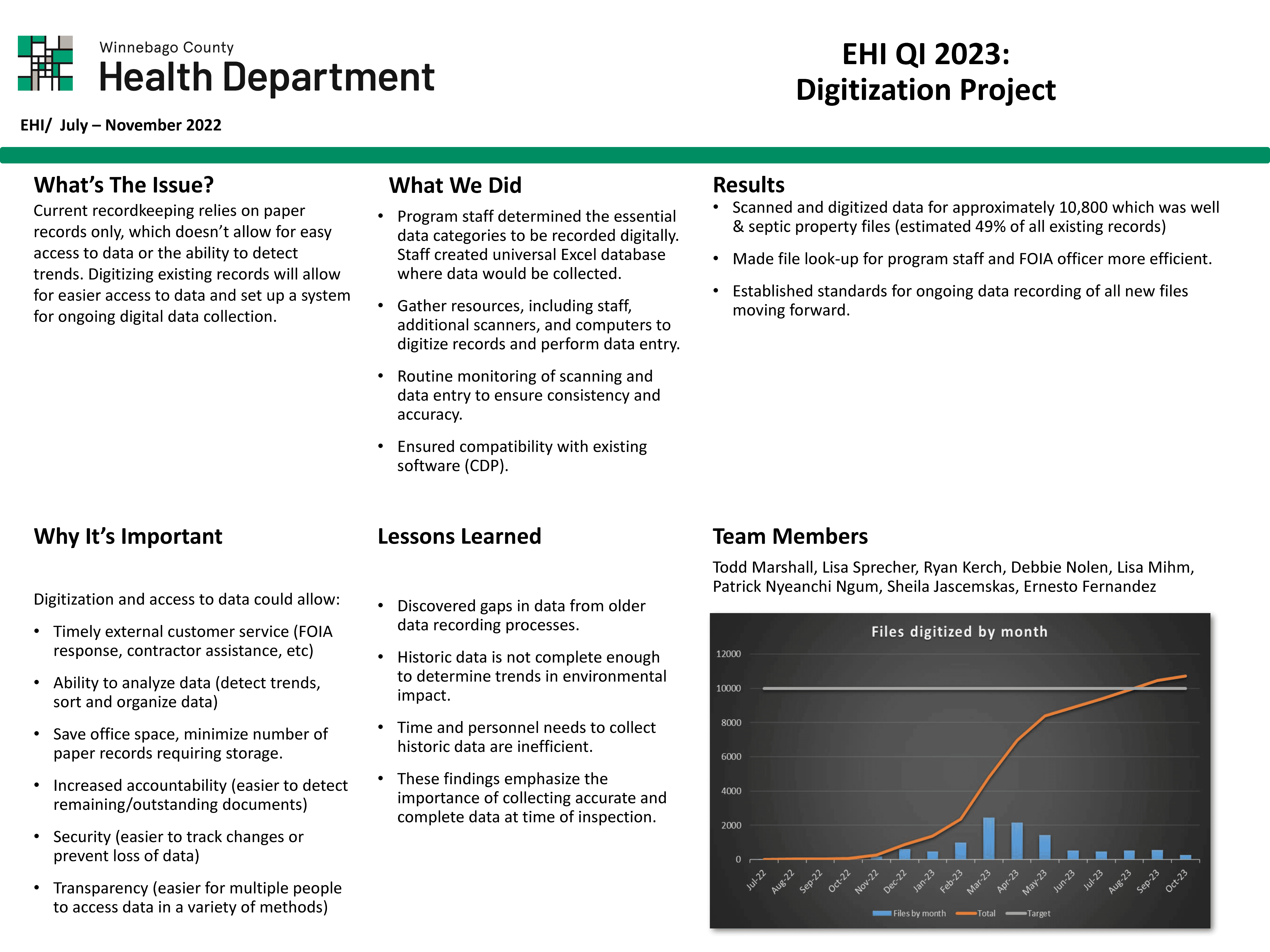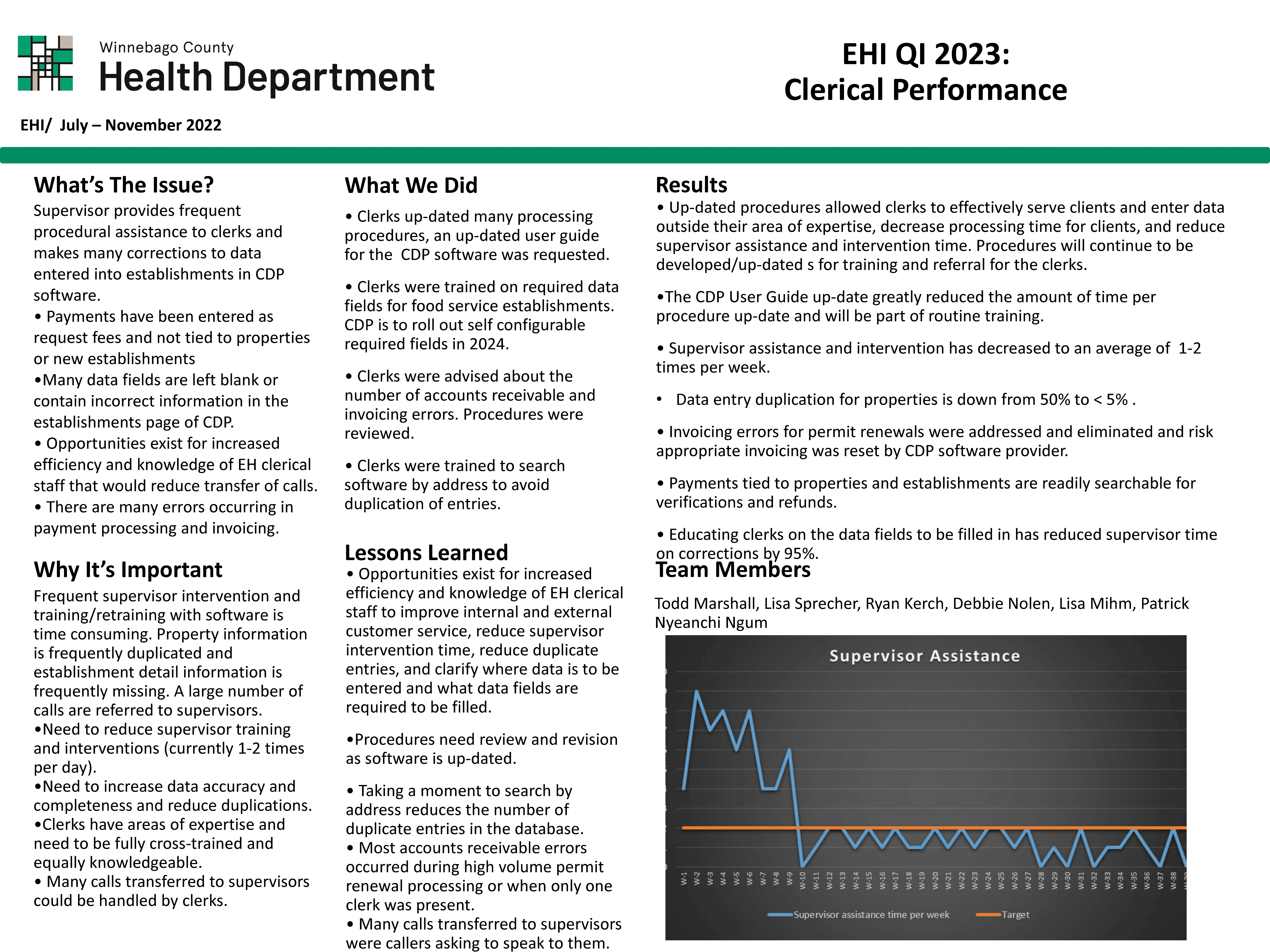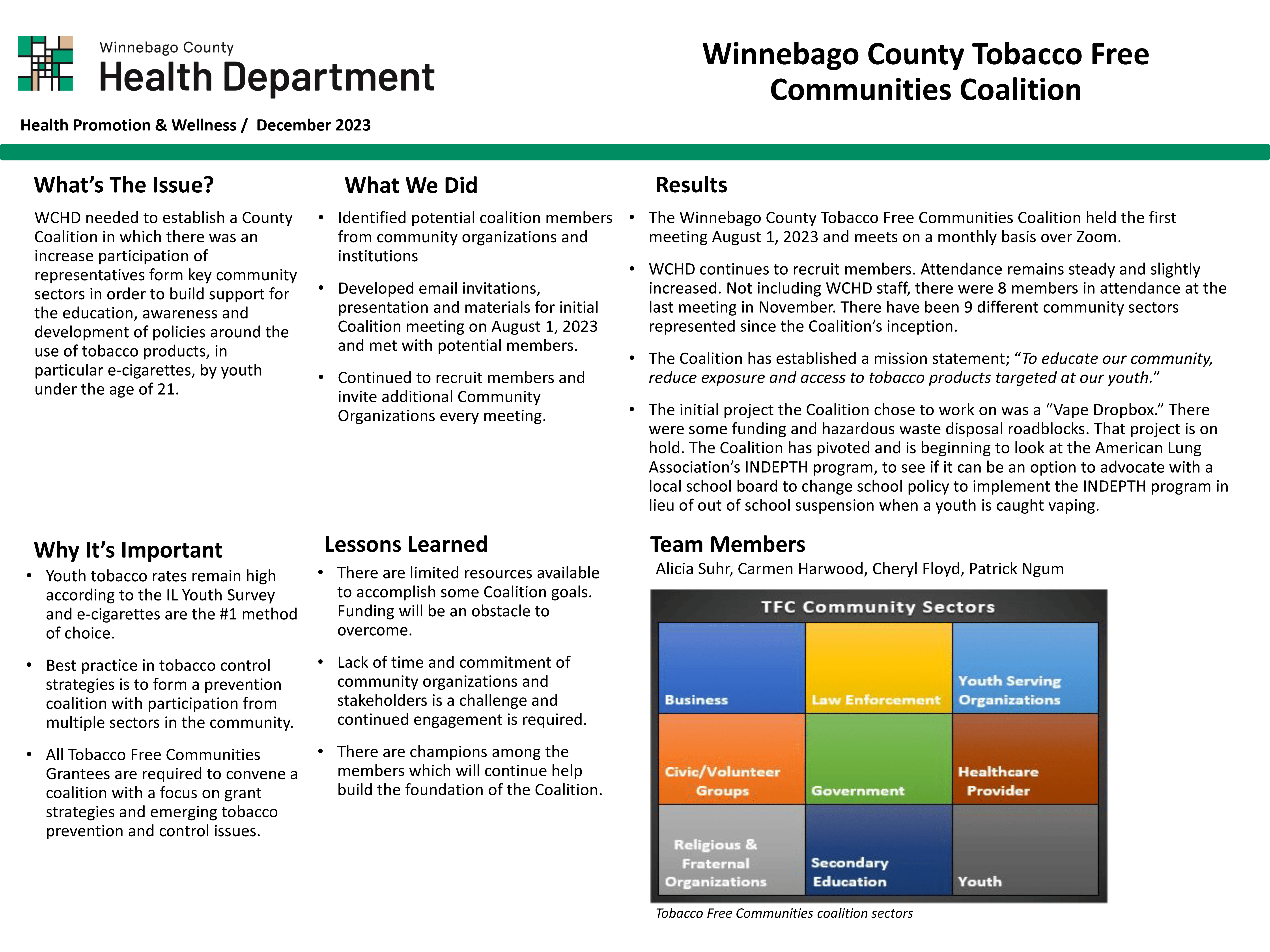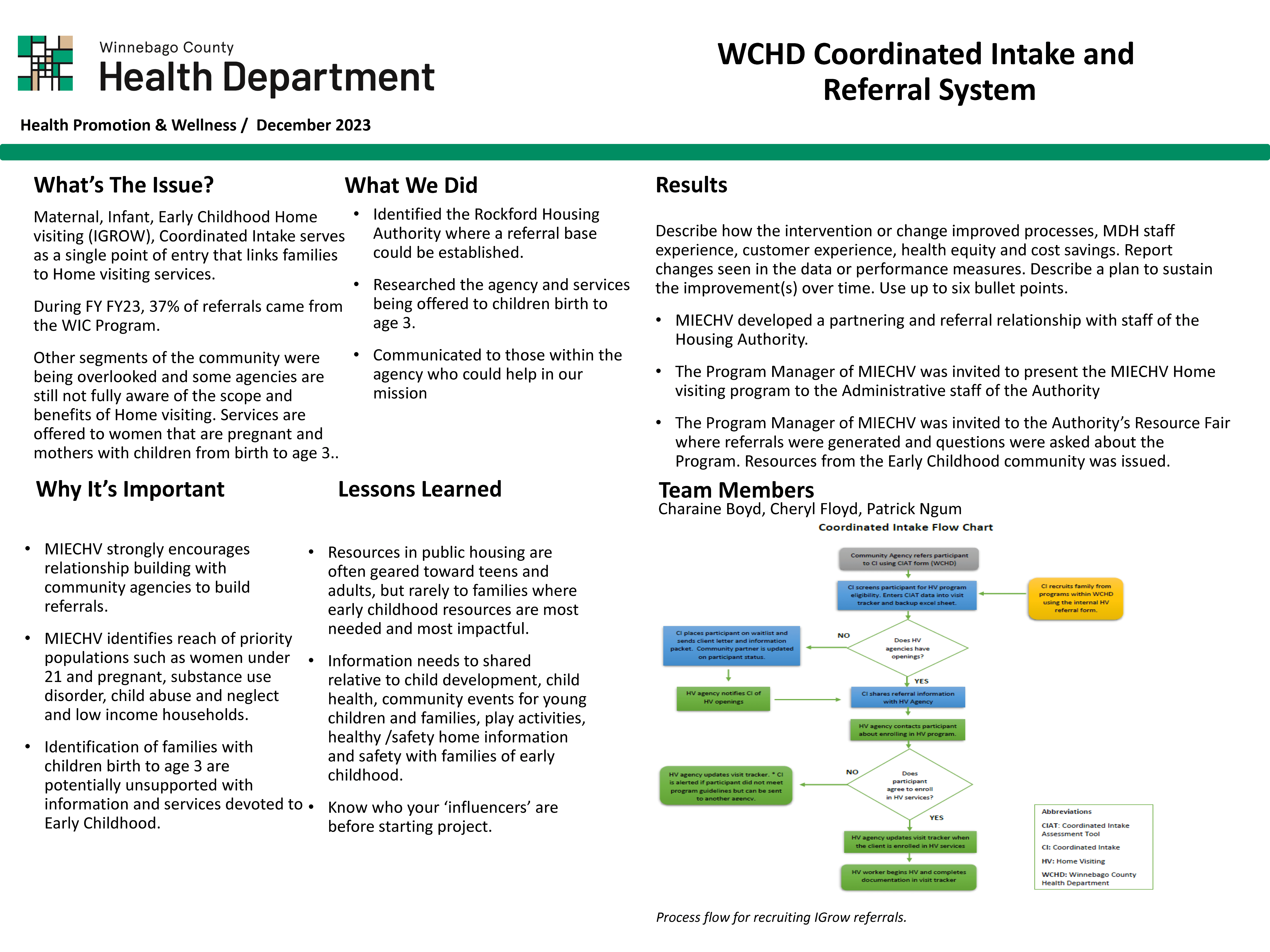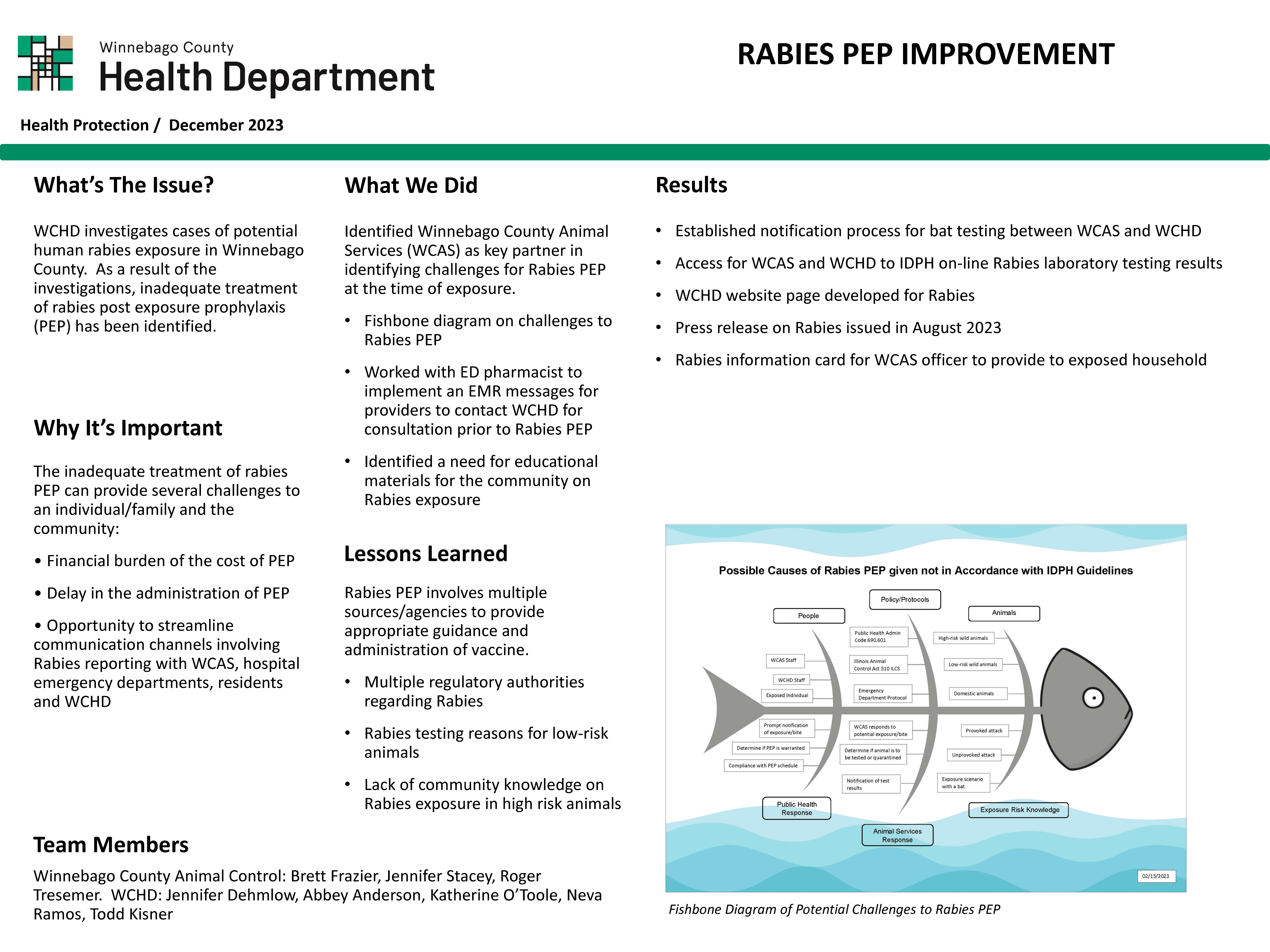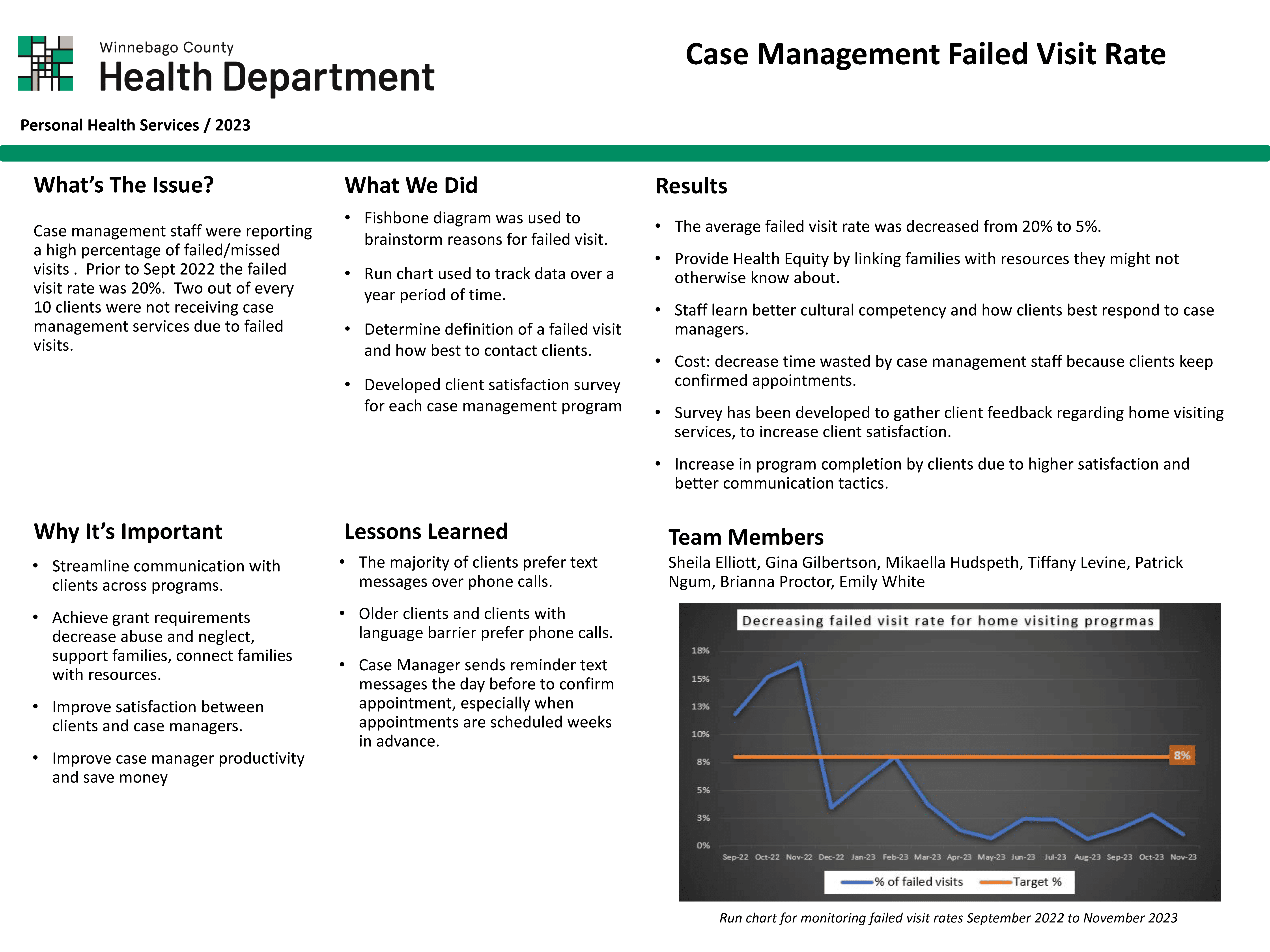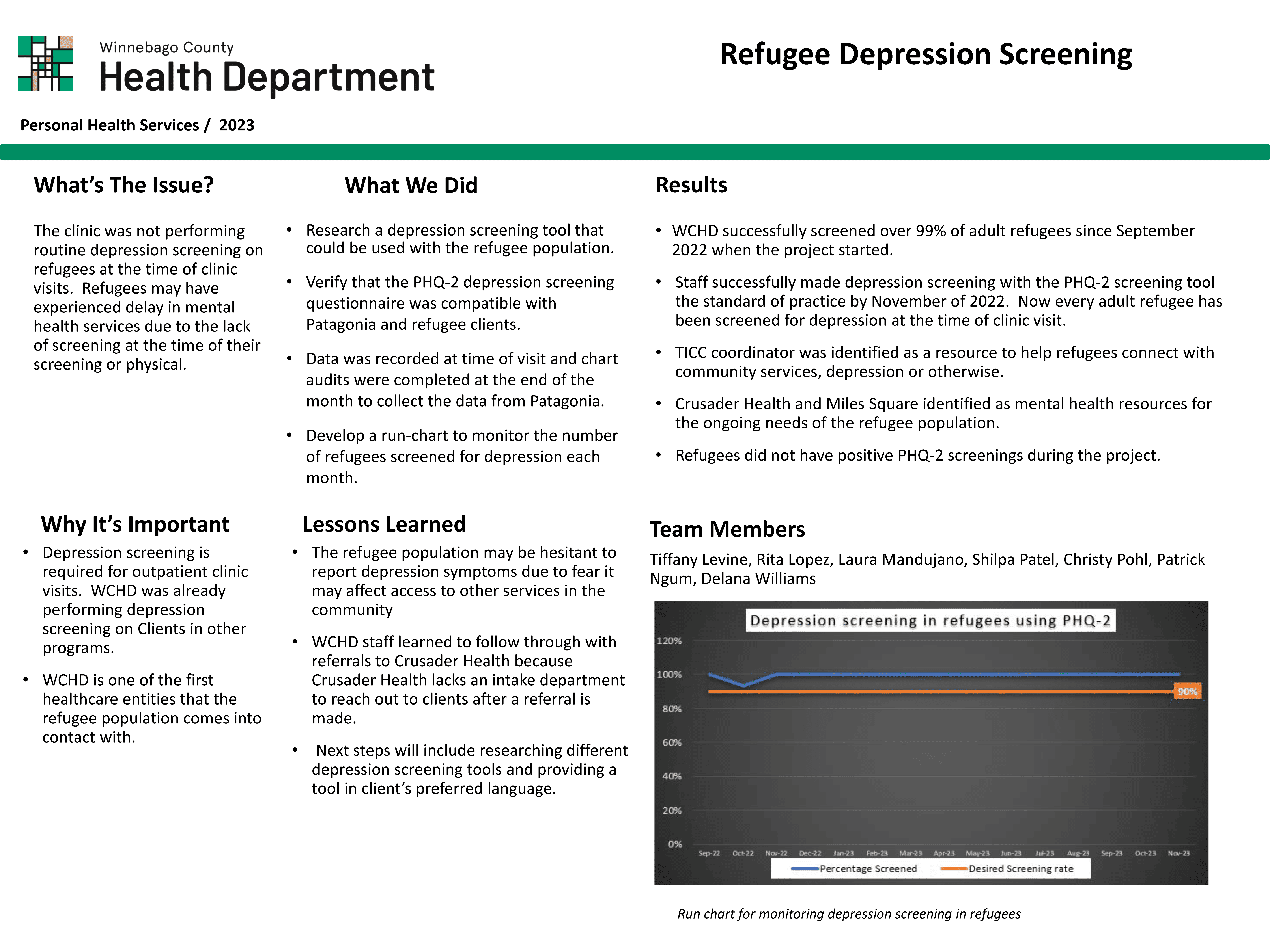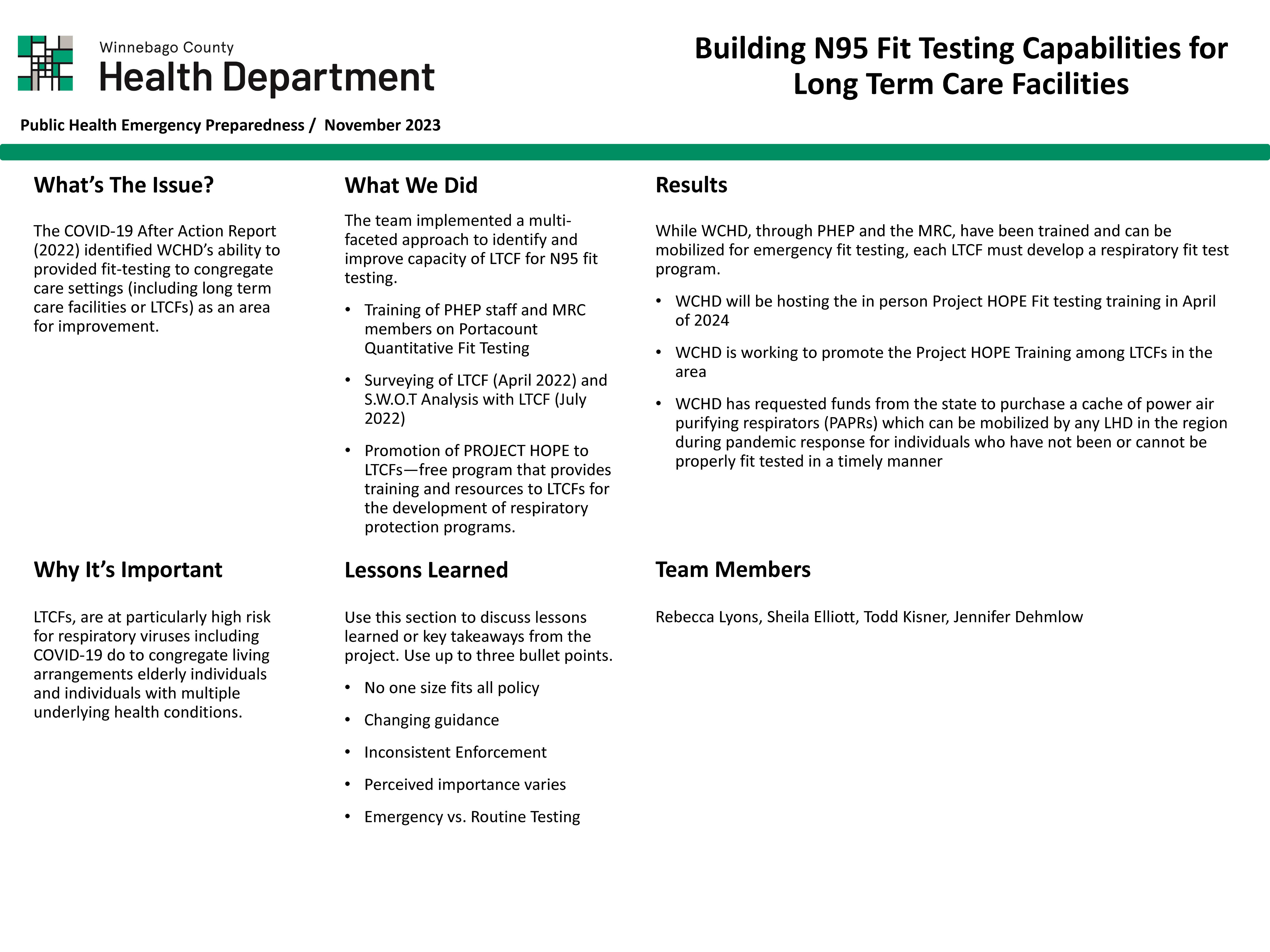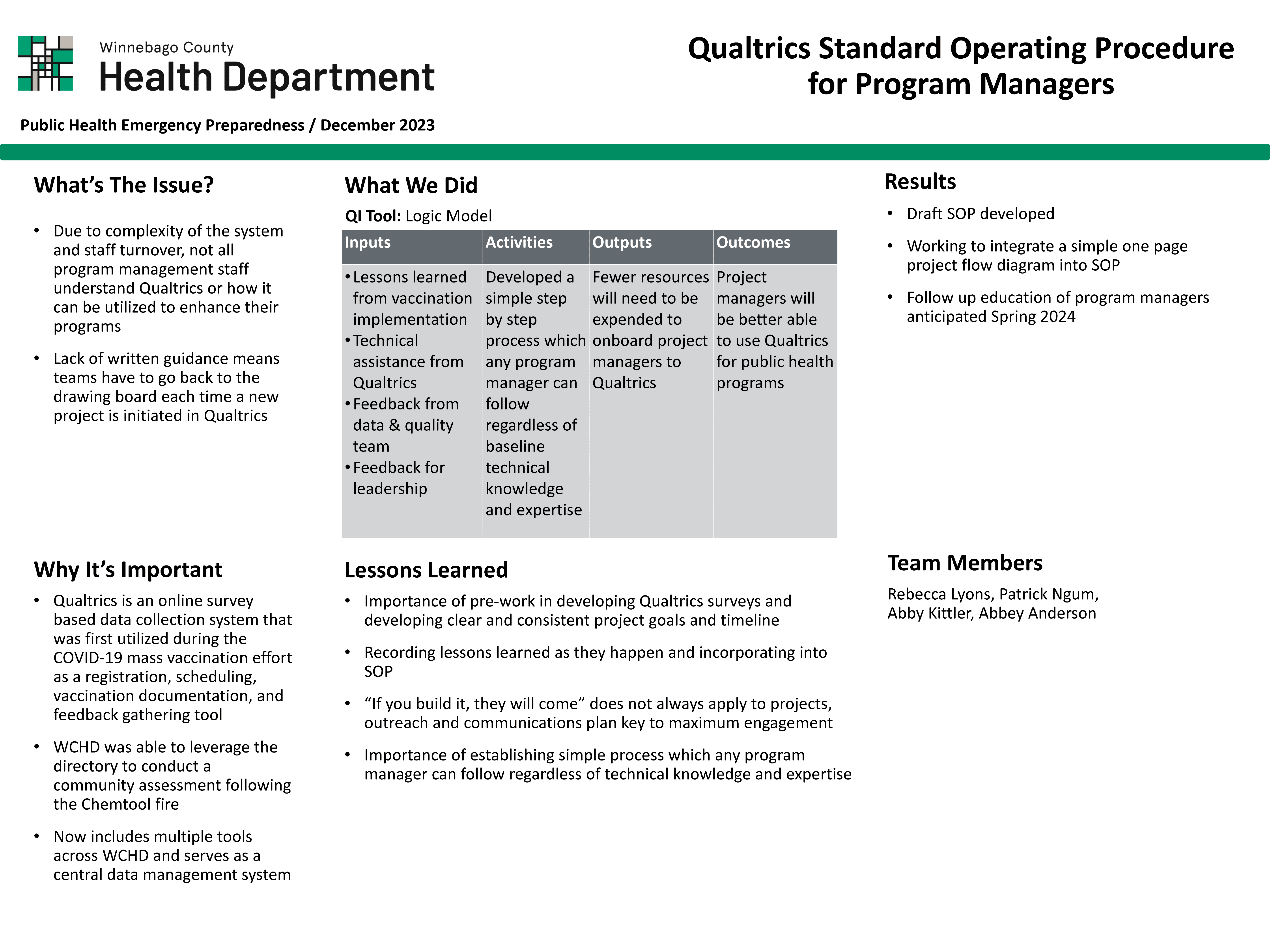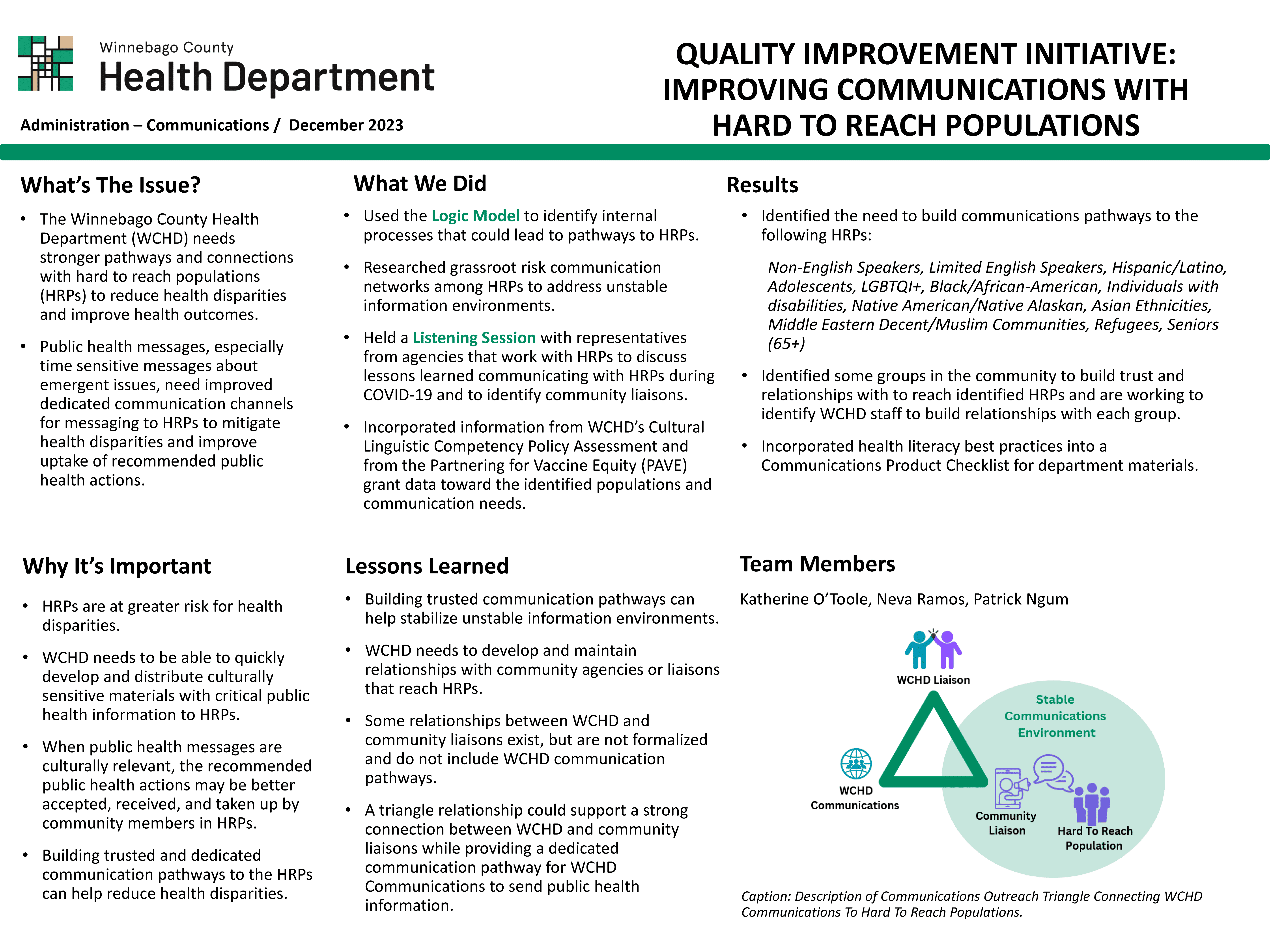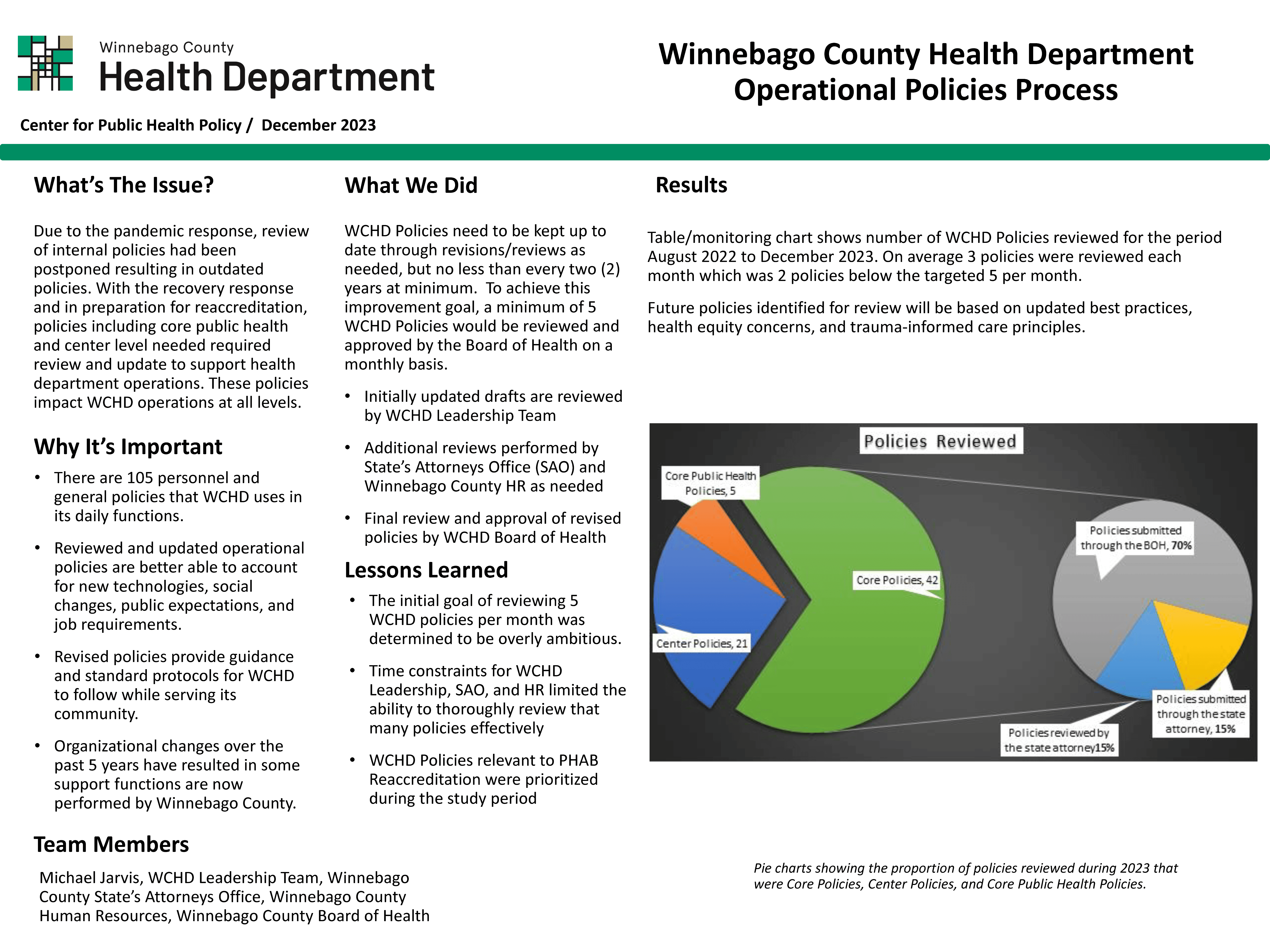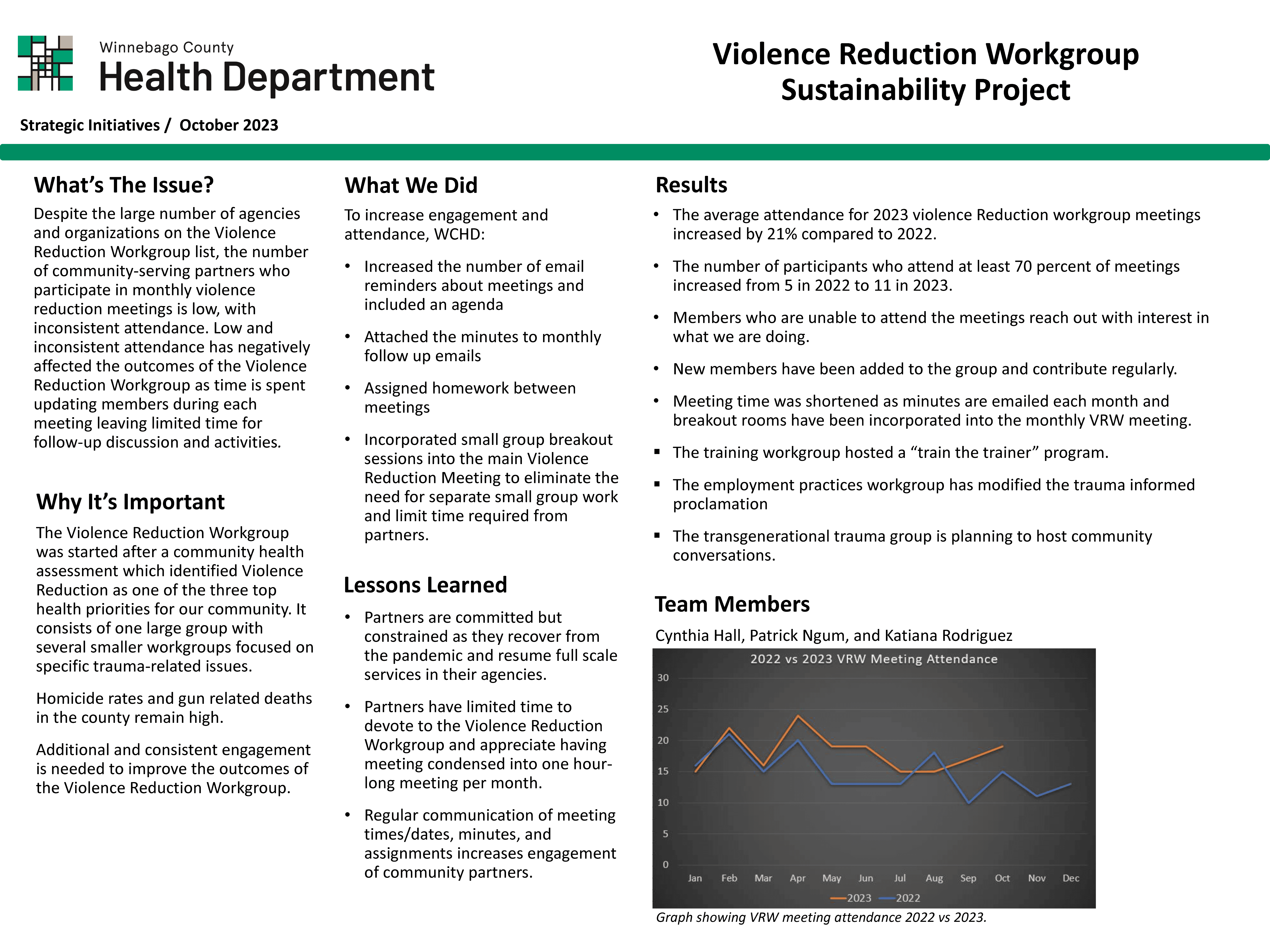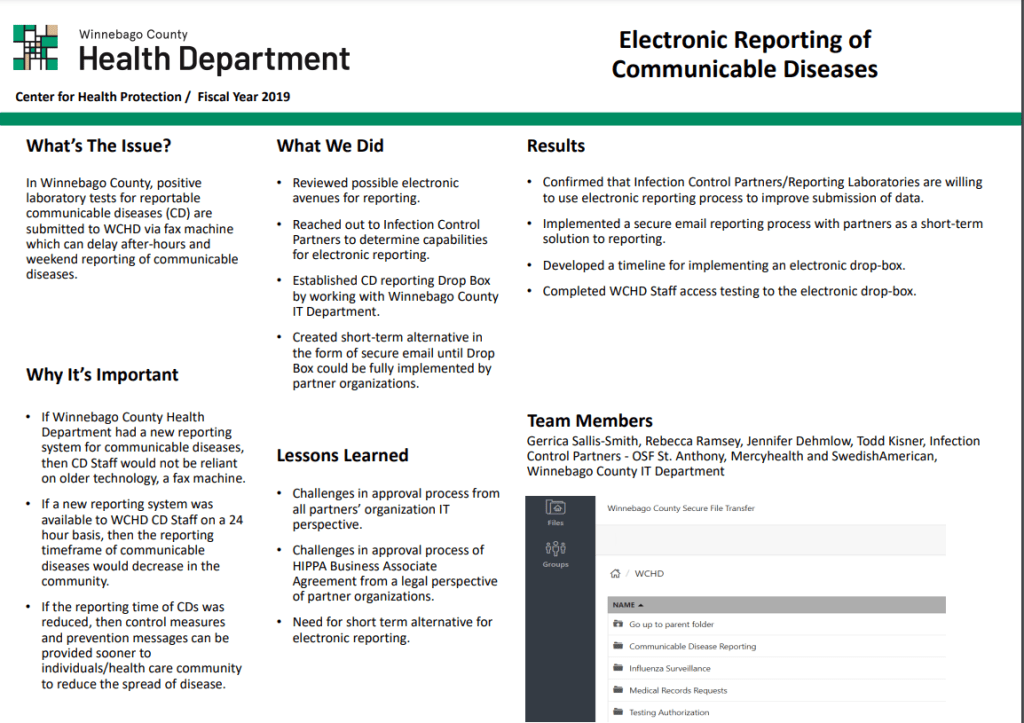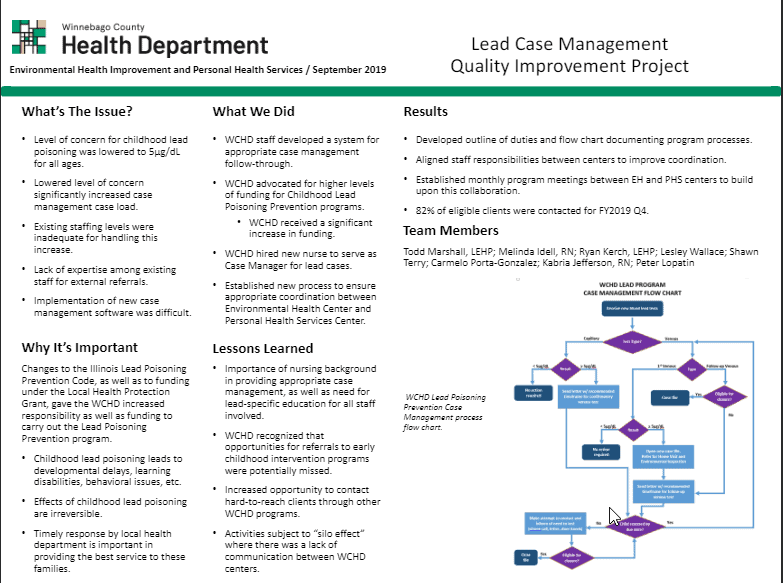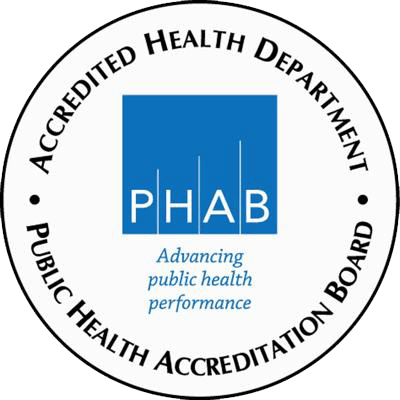The Winnebago County Health Department continuously strives to improve our policies and processes to provide the opportunity for the best possible health for all Winnebago County residents. WCHD also works to address systemic processes that result in health disparities. WCHD is committed to continuous quality improvement through systematic assessment, implementation, and evaluation of actions to improve health.
What is Quality Improvement (QI)?
Quality improvement is a continuous and ongoing effort to achieve equity and improve the health of the community by achieving measurable improvements. Areas for measurable improvement include: efficiency, effectiveness, performance, accountability, and healthy outcomes,
QI provides a venue to address public health challenges through communication and collaboration that improves tools used in implementing programs. QI utilizes the Plan-Do-Study-Act method to implement changes and evaluate the outcomes. QI is fundamental to public health as one of the 10 essential public health services: Improve and innovate public health functions through ongoing evaluation, research, and continuous quality improvement.
Currently, WCHD’s QI projects focus on processes that respond to community needs and improve population health.
WCHD 2023 QI Projects
ENVIRONMENTAL HEALTH IMPROVEMENT
HEALTH PROMOTION & WELLNESS
HEALTH PROTECTION
PERSONAL HEALTH SERVICES
PUBLIC HEALTH EMERGENCY PROCEDURES
HEALTH ADMINISTRATION/SUPPORT CENTERS
PREVIOUS QI PROJECTS
QI Project
Process for Reporting Communicable Disease From Laboratories and Infection Control Partners.
Description
WCHD worked to modernize the reporting system for communicable disease from laboratories and infection control partners.
Outcomes/Results
Utilize REDcap, a secure electronic system, for sharing reporting data and reducing reporting time.
QI Project
To Preventing Childhood Lead Poisoning Through Adjustments in Blood Lead Levels
Description
WCHD focused on addressing the change in the blood lead level that indicated concern for childhood lead poisoning. This change in process resulted in inadequate staffing to handle the increased case load.
Outcomes/Results
Expanded capacity by hiring a nurse to serve as a case manager, developing a flow chart of program processes, and aligning staff responsibilities to improve coordination.
QI Project
Implement A Vaccine Registration System That Will Allow For Appointment To Be Made based on priority.
Description
WCHD worked to ensure a vaccine registration system for COVID-19 that would meet the demands of the public health response in an equitable method, so that individuals would receive vaccine appointments based on their individual risks and priority.
Outcomes/Results
Purchased and implemented a data management system, called Qualtrics, for use in the COVID-19 vaccination effort. This online software system allowed individuals to register for the COVID-19 vaccine, make appointments based on priority, and complete a post-vaccination survey to add to vaccine safety information. The system also provided WCHD with a quick way to communicate back with registered individuals electronically about appointments and follow-up needs. In additions, the system provided vaccination monitoring at the community population level with easy-to-read dashboards showing who was getting vaccinated and how many vaccine doses were administered through WCHD.

